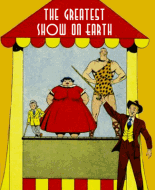Speed Comics 24As usual, I'm late to the table with the last review. Comments on the final Feisty Females follow. First, though:
Crash, she calls the plane 'a Martin' but later, 'the Baltimore' so what would it have been? And is it accurately drawn?
I could pretend that I knew this all along but in reality I had to research it. I was aware of other Martin bombers like the Marauder but not the Baltimore. The Baltimore, known in the US as the A-30, was a light attack bomber built by the Glenn L. Martin company beginning in 1940. Originally it was designed for the French air force, but when France fell the order was redirected to Great Britain. Hundreds of them were built for our WWII allies though none served in the US armed forces. Baltimores were flown mostly by British units in the Mediterranean and the Middle East. Given the approximate nature of most comic book aircraft, the one in this story is not bad.
Now for our main feature:
Speed Comics #24. Not just Speed Comics but
New Speed Comics!
Captain Freedom and the Young DefendersJoanie of the Young Defenders is definitely a feisty female. She's the one who leads the way and calls the others fraidy-cats, and she holds her own in a fight. She also owns the only "bycycle" I've seen. Joanie reminds me of The Kitten, another no-nonsense junior scrapper.
The story is standard stuff, helped by Cazeneuve's art, which is a touch above average. I cringed when Captain Freedom starts throwing people around while the jar full of Yellow Death sits in the middle of the lab. Luckily no one struck it...what a way to end the series. After reading several Captain Freedom stories I think the Defenders know darned well he's Don Wright. They just pretend not to. Either that or they're not as bright as they seem.
Shock GibsonAnother nice art job by Al Bryant. I never knew there was a snake called a hamadryad. I only knew about the mythological tree spirits. The dictionary says a hamadryad is a King Cobra. Morse code knots is a neat trick.
The Girl CommandosNot sure what the point is of the framing story. I agree with others who pointed out "young imp's" resemblance to the Yellow Kid. They should have lettered his dialogue on his shirt front. Manolo/Zero is beyond silly. Small enough to fit into a valise but lightweight enough for Ahnho not to notice. The Siamese twin villain(s) is a unique gimmick, but the story is too short to do anything with him(them). It's a failing of the entire story: so much is packed into six and a half pages that nothing is given time to develop. A case in point is the pilot "Bick Caniff." The writer takes the trouble to name him, but we never see him.
Biff BannonEasier to take than the other Biff Bannon story, but still nothing special.
The Black CatThe first thing that jumped out at me is that the Black Cat knows director Garboil is a Nazi spy and lets him go. I checked the story in the following issue, #25. Apparently this is a continuing thread. Both Black Cat and Rick Horne know Garboil is a fifth columnist but they let him be in the hope that he'll lead them to higher-ups.
However...in #26 the whole Garboil thing is forgotten. Black Cat goes on a world tour and (at least as far as #37, when I stopped checking) our Nazi director is never seen again. I guess it's another of those midstream course changes that plagued Golden Age comics.
The art is pretty good. Except for the last panel on our page 36. Why in the world does Linda pull her skirt up and over her head when all she needs to do is let it drop to the floor?
Crash, Cork, and the BaronAt last one of the trio gets a personality. It turns out Crash (no relation) is a jerk. Kudos to Carol for putting him in his place. Did anyone else notice that Carol doesn't get a name until page 5 of a 6-page story?
FlossieNo flame thrower demos, at least.
Ted ParrishI would have liked a bit more explanation of the "plenty of trouble" Dinah Lake caused the director. It must have been some dust-up to drive her to murder him. Ted's speech on our page 52, panel 2, doesn't make a lot of sense. I guess he's playing off his reputation as "The Man of 1000 Faces"?
"Thousand faces--two-faced--get it? Nudge nudge--get it?'Speed TaylorNothing to see here.
Final thought: I was constantly annoyed by the fake squiggles letterers and artists used to portray Asian languages. Was it really that hard to find examples of genuine Chinese/Japanese/Korean characters? The artist could ask his Chinese laundryman for a sample phrase. Or he could pull his Filipino houseboy out of a valise and ask
him. The only authentic Asian lettering I remember seeing was in "The Green Turtle," which makes sense since it was created by Chu F Hing, an authentic Asian.
But one must be careful when reproducing a language one doesn't understand. There's a story about noted industrial designer Norman bel Geddes, who started as a stage set designer. Early in his career he was assigned a play set in China. He wanted some large Chinese characters on the backdrop, and being young and foolish he simply copied some Chinese text he found from a book. After the preview, a Chinese gentleman asked him, "Do you realize that backdrop says, 'Grandpa spanks the baby?'"
Thanks to the Panther for the introduction to these fightin' females. I'd like to see some of them in longer stories.
 Author
Topic: Reading Group # 347 Feisty Females 2 (Read 359 times)
Author
Topic: Reading Group # 347 Feisty Females 2 (Read 359 times)
